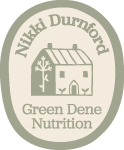
Oestrogen dominance is very common in perimenopausal women.
It occurs when the levels of oestrogen are relatively high, compared with the levels of progesterone and testosterone. It can be due to an excess of oestrogen, inadequate progesterone production or a combination of the two.
The perimenopause is characterised by a fluctuation and eventual decline of your sex hormones – oestrogen, progesterone and testosterone.
And as progesterone is the first hormone to decline during the menopause transition, it may be the trigger for some of the common perimenopause symptoms which women experience
Some of the common signs of oestrogen dominance are:
- PMS
- Sore breasts prior to menstruation
- Heavy and painful periods
- Fluid retention
- Weight gain
- Insomnia
- Bloating
- Fibrocystic breasts
There are many reasons for this hormonal imbalance or dysfunction:
High oestrogen levels can be due to an excessive production or poor clearance of this hormone. This may be due to a number of reasons:
Excessive production
- This is fairly common in women who are overweight. This is because an enzyme in fat cells called aromatase converts testosterone to oestrogen. And so, if you are carrying excess body fat, it could be contributing to higher oestrogen levels.
- Exposure to endocrine disruptors. These can mimic oestrogen in the body and allow excessive levels of oestrogen to build up. They are commonly found in plastics (BPA), pesticides used on our fruit and vegetables. They are also in parabens and phthalates found in our cosmetics, air fresheners and soft plastics such as clingfilm.
Poor digestion and clearance
- The liver and the bowels are responsible for getting rid of excess oestrogen from the body. And if you are suffering from things like constipation, you may not be clearing oestrogen properly. You could end up reabsorbing and recycling it, leading to oestrogen dominance.
A diet high in sugar
- Insulin is the hormone which is responsible for getting rid of sugar out of your blood and into your cells. But if you eat too much sugar and in turn produce too much insulin, it can stimulate the production of oestrogen.
There are a number of different reasons which cause low progesterone:
Nutrient deficiencies
- Low progesterone may be due to nutrient deficiencies, in particular zinc, vitamin B6 and magnesium.
Stress
- And stress can play a role too. In times of stress, you produce your flight and fight hormone cortisol. But production of this hormone can surpress progesterone and lead to oestrogen dominance.
The oral contraceptive pill
- The oral contraceptive pill stops ovulation. In doing so, it will also stop the production of progesterone. And allow more synthetic oestrogen to build up in the body
Top tips to reduce oestrogen dominance
Make sure that you look after your liver so that it can get rid of excess hormones.
Drink plenty of water, minimise alcohol and eat plenty of cruciferous vegetables (cabbage, cauliflower, kale and brussels).
Remove endocrine disruptors from your life.
Replace plastic bottles with glass and switch to natural household products around the house. You may also want to go organic with your fruit and veg wherever you can to reduce your exposure to pesticides.
Keep your bowels working well.
Eat plenty of fibre (whole grains, fruit, nuts and seeds), drink lots of water and exercise regularly to help flush your body of excess hormones.
Reduce inflammation as this can drive hormonal imbalances.
Include lots of anti-inflammatory foods in your diet such as fatty fish (salmon, sardines, mackerel, anchovies and herrings) along with lots of spices such as turmeric and ginger.
Try to maintain a healthy weight.
By maintaining a healthy weight, fat cells reduce and you produce less oestrogen.
Learn to relax.
By practising some self care for a few minutes each day, you will have a better balance between your cortisol and progesterone production.
Regulate your oestrogen levels.
Include phytoestrogens in your diet. These include flaxseeds, chickpeas, organic soy and sesame seeds.
Increase progesterone production.
Include nutrients which are required by your body to produce progesterone. Shellfish, meat, nuts and seeds contain high levels of zinc. Good sources of magnesium include dark leafy vegetables, legumes and dark chocolate. And salmon, meat, walnuts and bananas are great for B6.
One of the easiest ways to check whether oestrogen dominance is at the heart of your menopause symptoms is through testing your hormones levels and looking at how your sex hormones are being metabolised and eliminated from your body. This is all possible with the latest state of the art dried urine tests. And by doing this, it is a fast track solution to getting your symptoms under control.
If you would like to learn more, do drop me a line and I can explain how it all works
